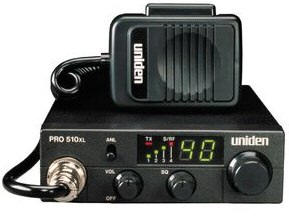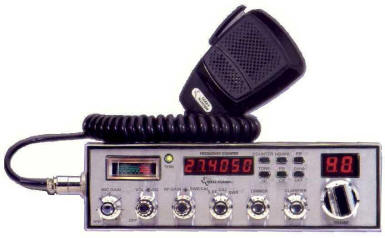Ham Radio Versus Citizens Band
Best Hobby A Young Man In The 1950's Could Have!

Very close to the truth!
Citizens Band - The Enemy!!!

"10-4, good buddy." "Smokies." "Pregnant roller skate." These phrases may sound foreign to those born in the age of cellular phones, but in the mid-seventies these phrases clearly meant "I understand," "police," and "Volkswagen." This lingo became popular with the emergence of the CB radio. The Citizens Band Radio was introduced in the United States in 1947. Acting as both a transmitter and a receiver, this two-way radio became widely-used among truckers during the 1974 Arab Oil Embargo. The CB allowed truckers to notify each other which gas stations were open and selling gas. Soon after, the general public found numerous uses for this tool. Drivers often used the CB to alert one another of police and speed traps. Fisherman used CBs to inform each other where the fish were biting, and others just used it to cure their loneliness. It became so popular that even Betty Ford, the First Lady herself, confessed she was a CB enthusiast, known over the airwaves as First Mama.

Many sociologists claimed that America's obsession with the CB Radio stemmed from people's desire to indulge their fantasies. The CB radio provided the anonymity for people to act as though they were someone else. Others reasoned that it was the American valorization of truckers and cops that drove the CB craze. Nonetheless, in the early 1980s the CB became so common, it ceased to be novel, and simply became an effective means of communication. Although it is still used by truckers and cops, the communicators of the 90s have replaced the CB radios with their ever-ringing cellular phones.
What Is CB??
What???Citizens' Band radio (CB) is, in most countries, a system of short-distance, simplex radio communications between individuals on a selection of 40 channels within the 27 MHz (11 meter) band. The CB radio service should not be confused with FRS, GMRS, MURS, or amateur ("ham") radio. Similar personal radio services exist in other countries, with varying requirements for licensing and differing technical standards. In many countries, CB does not require a license and, unlike amateur radio, it may be used for commercial communication.
They Stole Our 11-Meter Band!
The technology at the time was not advanced enough for UHF radios to be practical and affordable for the average consumer. So, in 1958,[3] the Class D CB service was opened at 27 MHz, and this is what is popularly known as CB. There were only 23 channels at the time; the first 22 were taken from what used to be an Amateur 11-meter band, while channel 23 was shared with radio-controlled devices.
Definition
The Citizen's Band (CB) Radio Service, also known simply as CB, is a public, two-way personal radio service. There are several classifications of CB operation. The best-known form of CB is voice communications that became a fad in the 1970s. Mobile CB operation, especially in cars and trucks, remains popular. To a lesser extent, "CB'ers" engage in fixed operation from homes, and in portable communications using handheld transceivers.
Most CB operation takes place within a narrow band of frequencies near 27 MHz. There are 40 channels in this band. These channels are overcrowded. Congestion is worst during peaks in the 11-year sunspot cycle when the 27-MHz band supports worldwide communication known as "skip." Sunspot cycle peaks occurred in 1967-69, 1978-80, 1989-91, and 2000-2002. During the long intervals between these peaks, the normal range of operation on the 27-MHz band is rarely more than 20 miles.
Some CB operators illegally modify their equipment, or obtain illegally modified equipment, capable of higher transmitter output power and greater frequency coverage than is allowed by Federal Communications Commission (FCC) regulations. These operators use their equipment in an attempt to communicate over long distances, and/or to compete with other users of the service. This is called freebanding or bootlegging.
